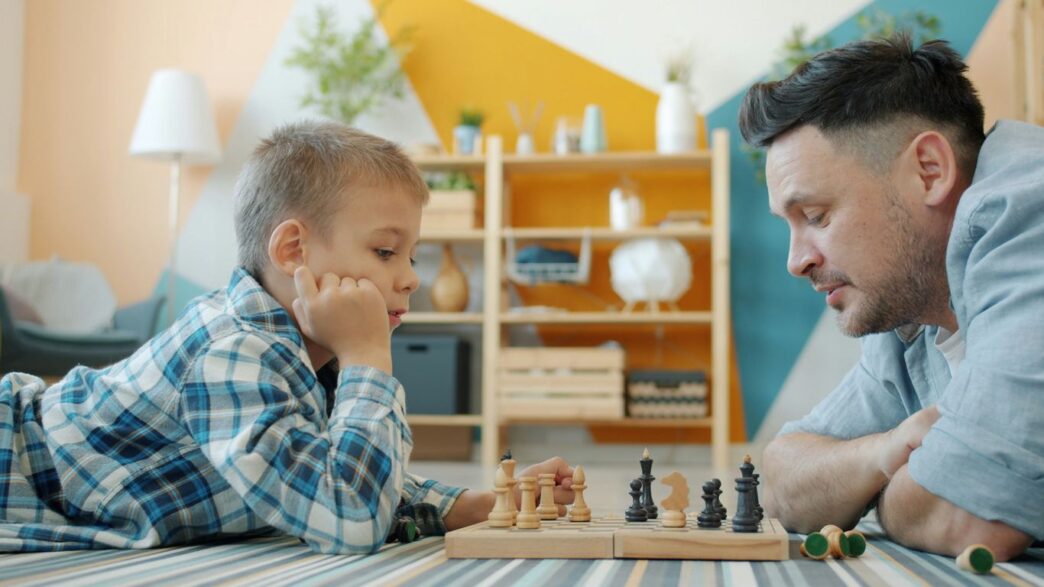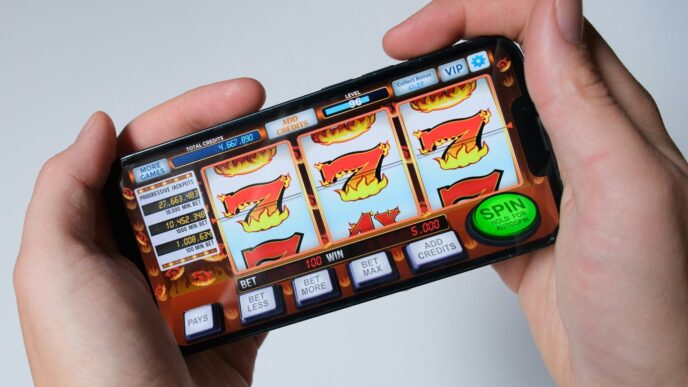Planning a game night is fun, but picking the right games can be a challenge. You want something that everyone will enjoy, something that sparks conversation and laughter. Forget staring at screens; it’s time to gather around a table with some of the best top deck games. These picks are great for getting people together and making some good memories. Whether you’re looking for something quick and silly or a bit more strategic, there’s something here for every group.
Key Takeaways
- Codenames is a word game where spymasters give one-word clues to help their team guess specific cards.
- Cards Against Humanity is an adult party game known for its humor and ability to reveal personalities.
- Exploding Kittens is a popular, family-friendly card game with a Russian Roulette style.
- Bananagrams is a fast-paced word game where players build their own crosswords.
- Scattergories is a classic category game that tests creativity and can be played in quick rounds.
1. Codenames
Alright, let’s talk about Codenames. This game is a total hit at parties, and for good reason. It’s a word association game where two teams compete to identify their secret agents based on one-word clues given by their team leader, the spymaster. The real magic happens when a spymaster has to give a clue that links multiple words without accidentally pointing to the other team’s agents or, worse, the assassin.
Here’s the basic rundown:
- Teams: You split into two teams, red and blue.
- Spymasters: Each team designates one player as their spymaster. They’re the only ones who know the identities of all the agents.
- The Grid: A 5×5 grid of word cards is laid out. Some of these words belong to the red team, some to blue, some are neutral bystanders, and one is the deadly assassin.
- Giving Clues: The spymaster gives a single word clue and a number. The number tells their team how many words on the grid relate to that clue. For example, if the spymaster says "Animal: 3," their team needs to find three animal words on the grid.
- Guessing: The team discusses and touches the cards they think match the clue. If they’re right, they can keep going. If they pick a bystander, their turn ends. If they pick the other team’s agent, that team gets a point. And if they pick the assassin? Game over, they lose immediately.
It sounds simple, but it gets surprisingly tricky. You have to think about how your teammates will interpret your clues, and sometimes you have to take a gamble. It’s a fantastic way to get to know your friends better and see how your minds work together. Plus, there are different versions like Codenames: Duet if you want to play with just two people.
2. Cards Against Humanity

Alright, let’s talk about Cards Against Humanity. If your game night crowd has a sense of humor that leans towards the absurd and a high tolerance for awkwardness, this is probably already on your shelf. It’s basically a fill-in-the-blank card game, but with a decidedly adult twist. One player plays a black card with a prompt, and everyone else plays a white card with a phrase or word to complete it. The player who played the black card picks the funniest, most outrageous, or most fitting combination. It’s a fantastic way to see just how twisted your friends’ minds can be.
It’s super simple to get into. You don’t need a degree in rocket science to figure it out, which is always a plus when you’re trying to get a game going without a ton of fuss.
Here’s the basic rundown:
- The Setup: Everyone gets a hand of ten white cards. One player is the ‘Card Czar’ for the round.
- The Play: The Card Czar reads a black card aloud. Everyone else chooses a white card from their hand that they think best fits the blank or answers the question on the black card.
- The Judging: All the white cards are collected, shuffled, and then read aloud by the Card Czar, who picks their favorite. The player who submitted that card gets a point.
- The Rotation: The role of Card Czar passes to the next player, and you start a new round.
It’s the kind of game that can lead to some truly unforgettable moments and inside jokes. Just be prepared for some potentially offensive humor – that’s kind of the whole point!
3. Exploding Kittens
Okay, so Exploding Kittens. I’ll admit, the name threw me off a bit at first, being a cat person and all. But this game is super popular, and it’s basically a card game version of Russian Roulette, but with more cats and less… well, you know. It’s surprisingly family-friendly, which is great because it means everyone can play. No need to spend an hour deciphering a giant rulebook either; it’s pretty straightforward once you get going.
Here’s the basic idea:
- You draw cards, hoping not to draw an Exploding Kitten.
- If you draw an Exploding Kitten, you’re out unless you have a Defuse card.
- Other cards let you skip your turn, attack other players, or shuffle the deck.
The goal is to be the last player left in the game. It’s a quick game, perfect for when you don’t have a ton of time but still want some laughs. It’s got that simple, addictive quality that makes you want to play just one more round, even when you know you probably shouldn’t.
4. Bananagrams
Alright, let’s talk about Bananagrams. This game is basically a super-fast, free-form version of Scrabble, but way more chill. You get a bunch of letter tiles, and the goal is to build your own crossword grid. The first person to use all their tiles and make a valid grid wins. It sounds simple, and it is, but that’s part of its charm.
What I really like about Bananagrams is how flexible it is. Sure, there’s a timer if you want to play by the official rules, but honestly, who needs that pressure? I’ve played where we just ditch the timer and focus on making the most epic, sprawling word-map possible. It’s less about winning and more about seeing what crazy words everyone can come up with and how they connect. It’s a great way to get your brain working without feeling like you’re in a competition.
Here’s a quick rundown of how a typical game goes:
- Everyone grabs a bunch of letter tiles from the main pile (called the ‘peel’).
- You start building your own crossword grid, connecting words horizontally and vertically.
- If you get stuck or want more letters, you can ‘peel’ more tiles, but you have to give one of your already-placed tiles back to the pile.
- When someone shouts ‘Peel!’ (meaning they’ve used all their tiles), everyone else has to peel more tiles.
- The game ends when one player uses all their tiles and shouts ‘Bananas!’
It’s a game that’s easy to learn, quick to set up, and you can play it pretty much anywhere. Plus, it’s surprisingly satisfying to just keep rearranging your letters and finding new word combinations. It’s a solid choice if you want something a bit different from the usual board games.
5. Scattergories
Oh man, Scattergories. I just love this game. It’s been around forever, and honestly, it never gets old. If you haven’t played it, here’s the deal: everyone gets a list of categories, and then a letter is chosen. Your job is to come up with a word for each category that starts with that letter. The trick is, your answers have to be unique to score points. If someone else wrote down the same word, you both get nothing for that category. It really makes you think outside the box.
It’s super fast, too. Each round has a timer, usually just three minutes, so you can get a ton of games in during one night. This means you can really fill up your game night with Scattergories if you want. It’s a great way to get everyone’s brain working and laughing at the weird answers people come up with. You can find the classic Scattergories game pretty easily.
Here’s a quick rundown of how a round usually goes:
- A list of categories is read out (think things like "Things you find in a refrigerator" or "Types of movies").
- A letter is randomly selected.
- Everyone scrambles to write down an answer for each category starting with that letter before the timer runs out.
- Answers are read aloud, and points are awarded for unique answers.
It’s simple to learn, but it can get surprisingly competitive. Plus, the sillier the answers, the more fun it is. Definitely a solid choice for any game night.
6. Monikers
Monikers is a party game that really gets people talking and laughing. It’s pretty simple to learn, which is always a plus for game nights. The whole idea is to get your team to guess as many names as possible from a deck of cards within a time limit. What makes it interesting is that it plays out over three rounds, and each round changes the rules for how you give clues.
First round, you can say pretty much anything to get your team to guess the name, just don’t say the name itself. Then, in the second round, you have to stick to just one word as your clue for each name. It gets tricky fast! The final round is where things get really silly – it’s all charades. You have to act out the names without speaking. It’s a fantastic way to see how well your friends know each other and how creative they can get under pressure.
It’s a game that’s easy to pick up, but it offers a lot of replayability because you’re always dealing with different names and different people’s interpretations. It’s a solid choice if you want a game that’s energetic and guaranteed to get some good reactions.
7. Sorry!
You know, sometimes the best game night choices are the ones that bring you right back to your childhood. Sorry! is one of those games. I recently dusted off my old copy on a trip, and honestly, it was a blast. It’s funny how a game you haven’t played in years can still be so much fun, especially when you’re the one winning, right?
Sorry! is a classic race-to-the-finish board game where the goal is to get all your pawns from your Start space to your Home space. It sounds simple, and for the most part, it is. You draw cards that tell you how many spaces to move, or if you can swap places with another player, or send them back to Start. That last part is where the ‘Sorry!’ comes in – you get to send someone back to the beginning, and they have to say ‘Sorry!’ as they do it.
Here’s a quick rundown of how a turn generally goes:
- Draw a card: This card dictates your move or action.
- Move your pawn: Follow the instructions on the card. You might move forward, backward, or swap with another player.
- Send opponents back: If you land on a space occupied by an opponent (and the card allows it), they go back to Start. Ouch!
- Get your pawns home: The first player to get all four of their pawns into their Home space wins.
It’s a game that’s easy to learn, which is great for mixed groups with different gaming experiences. Plus, the element of chance with the card draws and the direct interaction of sending people back means things can get pretty lively. It’s proof that sometimes, the oldies are goodies for a reason.
8. Ticket to Ride

Ticket to Ride is a fantastic board game that really captures the spirit of cross-country train travel. It’s pretty straightforward to learn, which is always a plus for game nights. The basic idea is that you’re collecting sets of colored train car cards. You use these cards to claim railway routes on a map of North America, connecting different cities.
The player who scores the most points by claiming routes and completing destination tickets wins. Destination tickets are secret goals you draw that require you to connect two specific cities. If you manage to connect them, you get points; if you don’t, you lose points, so there’s a bit of risk involved there.
Here’s a quick rundown of how a turn generally goes:
- Draw Train Car Cards: You can take two cards, either from the face-up display or blindly from the deck.
- Claim a Route: Play a set of matching colored train car cards to place your plastic trains on a route between two cities.
- Draw Destination Tickets: Take three new destination tickets and keep at least one. These are your secret objectives.
It’s a game that balances strategy with a bit of luck. You have to decide whether to go for long routes, block your opponents, or focus on completing your destination tickets. The game ends when one player has only two or fewer train cars left, and then everyone tallies up their scores. It’s a great way to spend an evening, and there are tons of expansion maps if you want to mix things up later on.
9. Carcassonne Board Game
Alright, let’s talk about Carcassonne. This game is a real gem for game nights, and it’s surprisingly easy to get into. The basic idea is that you’re all building a medieval landscape together, piece by piece. You draw these little square tiles, each showing a bit of road, a city, a field, or a monastery, and you place them down to connect to what’s already there. It sounds simple, and it is, but there’s a good amount of strategy involved.
Here’s a quick rundown of how it usually goes:
- Draw a Tile: On your turn, you grab one of the face-down tiles.
- Place the Tile: You have to put it next to a tile that’s already on the table, making sure the features match up – roads connect to roads, cities to cities, and so on. No weird road-to-field connections allowed!
- Place a Follower (Optional): After placing your tile, you can choose to put one of your little wooden people, called "meeples," onto a feature on that tile. You can put them on a road to claim it, in a city to claim it, on a monastery, or in a field. You can’t place a meeple on a feature if there’s already another meeple from any player on that same connected feature.
- Score Features: When a feature is "finished" – like a road with two ends, or a city completely walled off – any meeples on it score points. The player with the most meeples on that finished feature gets the points. If it’s a tie, everyone gets the points. Fields are a bit different and score at the end of the game.
It’s a game where you’re constantly making little decisions. Do you try to finish your own little road quickly, or do you try to sneakily connect your road to a much bigger one someone else is building? Do you place your meeple on a small city hoping to finish it fast, or do you go for a big field that might score a lot at the end but could be hard to complete?
Carcassonne plays pretty quickly once everyone knows the rules, usually around 30-45 minutes. It’s great because it scales well with different player counts, from two up to five people. It’s not overly complicated, but there’s enough going on to keep things interesting. Plus, the satisfaction of seeing the landscape grow and claiming your little bits of it is pretty neat. It’s definitely a solid choice for a relaxed but engaging game night.
10. Dominion
Alright, let’s talk about Dominion. If you’ve ever played a game where you start with a basic deck of cards and then buy better ones to make your deck stronger as you go, you can thank Dominion. It’s pretty much the game that kicked off the whole ‘deck-building’ genre. Everyone starts with the same small, identical deck. Then, on your turn, you draw some cards, use them to buy new cards from a central pile, and those new cards go into your deck. The goal is to build a deck that gets you victory points, but here’s the tricky part: victory point cards are kind of dead weight during the game. They don’t do anything useful, they just clog up your hand. So, you’re constantly trying to balance buying those point cards before someone else does, with buying cards that actually help you take more actions, buy more stuff, or get you those points later on.
It’s one of those games that’s super easy to get the hang of. You can explain the basic idea in like, five minutes. But the more you play, the more you realize there are all these different strategies and tough choices to make. You really have to think about what cards to buy and when. Do you go for cards that give you more actions right away, or do you grab those victory point cards before they’re all gone? It’s a neat puzzle.
Here’s a quick rundown of how a turn generally goes:
- Action Phase: You can play one Action card from your hand (if you have any). These cards do all sorts of things, like letting you draw more cards, play more Actions, or buy more cards.
- Buy Phase: You can buy one card from the Supply piles using the coins you have from cards played and cards in hand.
- Clean-up Phase: You discard all the cards from your hand and the cards you played, then draw a fresh hand of five cards.
One thing to note is that the base game comes with a bunch of different card types you can mix and match, which is awesome for replayability. But for a brand new player, looking at all those options for the first time can feel a little overwhelming. The box itself is also pretty big, partly because it has a built-in organizer, which is handy for setup but makes it take up more shelf space than you might expect for a card game.
Ready to Deal Yourself a Good Time?
So, there you have it. We’ve looked at a bunch of different card games, from the ones you probably played as a kid to some newer ones that are pretty fun too. Whether you’re looking for something to get everyone laughing, a game that makes you think, or just a chill way to spend time with friends, there’s definitely a deck of cards out there waiting for you. Don’t let those cards just sit in the box – pull them out, gather your people, and get playing. You might just find your new favorite way to hang out.
Frequently Asked Questions
What makes a game a ‘top deck’ game?
A ‘top deck’ game usually means a game that’s really popular and fun, often one that people want to play again and again. It’s a game that stands out and is a go-to choice for a great time with friends or family.
Are these games good for beginners?
Many of these games are easy to learn and jump right into, making them perfect for people who don’t play games often. Some might have a little more strategy, but they’re still super fun and not too complicated to figure out.
How many people can play these games?
The number of players can change depending on the game. Some are best with just two people, while others can handle larger groups, making them great for parties or family gatherings.
Do I need special cards or equipment for these games?
Most of these games come with their own special cards or game pieces. While some might use a standard deck of playing cards, others have unique components that are part of the fun.
What if my friends like different kinds of games?
This list has a mix of different game styles! There are word games, strategy games, and funny party games. You’re sure to find something that everyone will enjoy, no matter their taste.
Can kids play these games too?
Some games are definitely for adults because of their humor, but many are family-friendly and can be enjoyed by both kids and grown-ups. Always check the game’s age recommendation to be sure!














